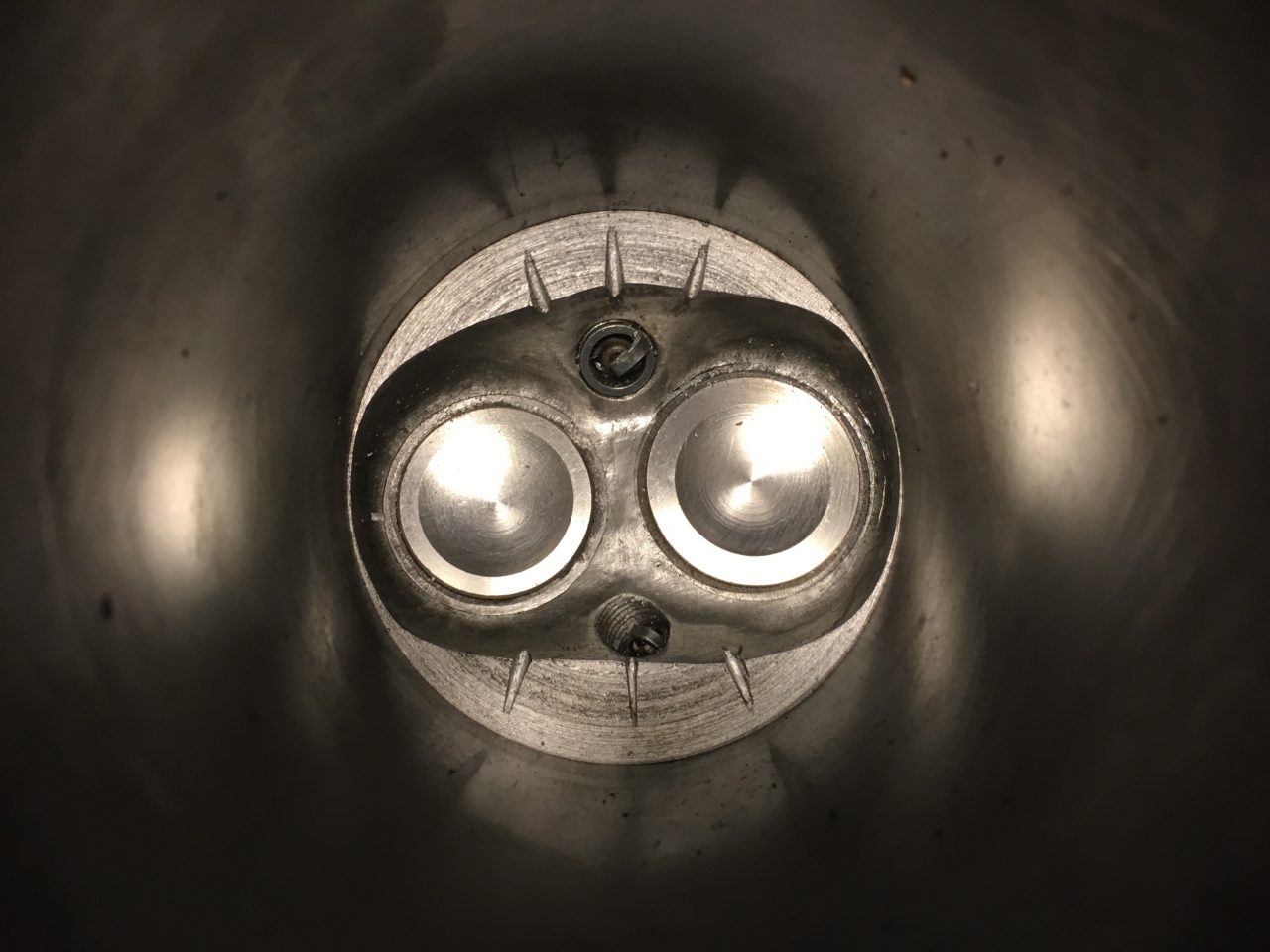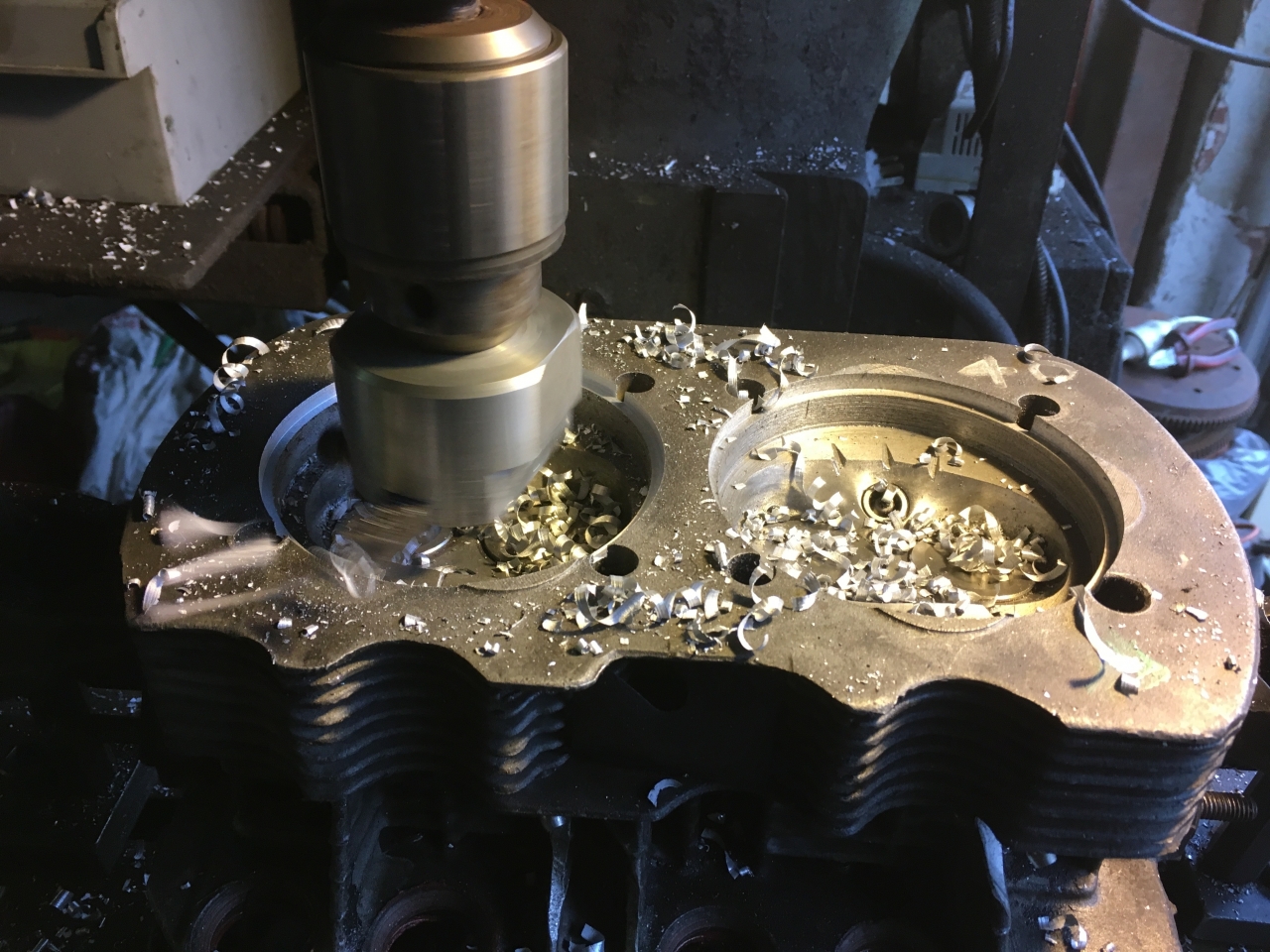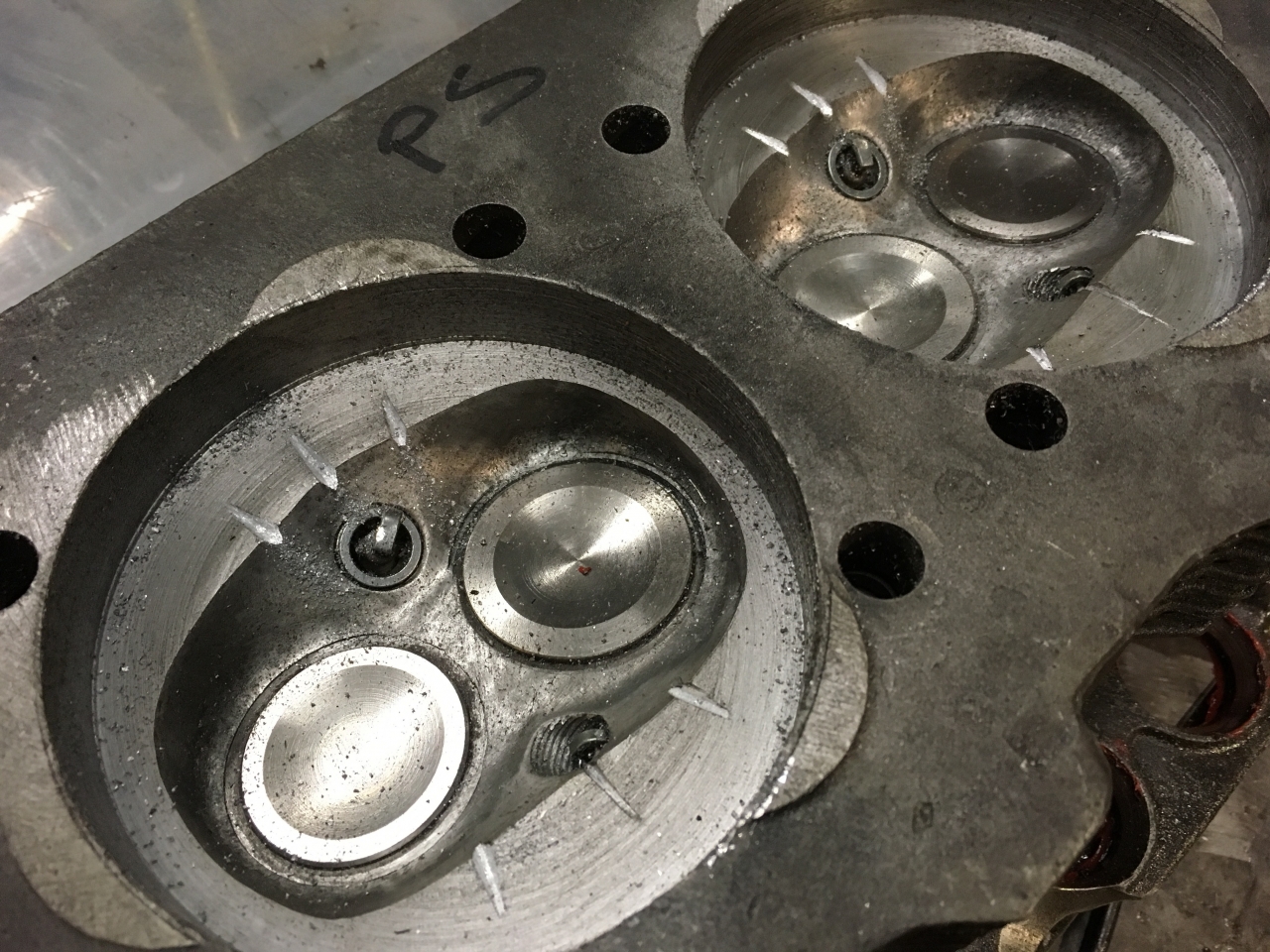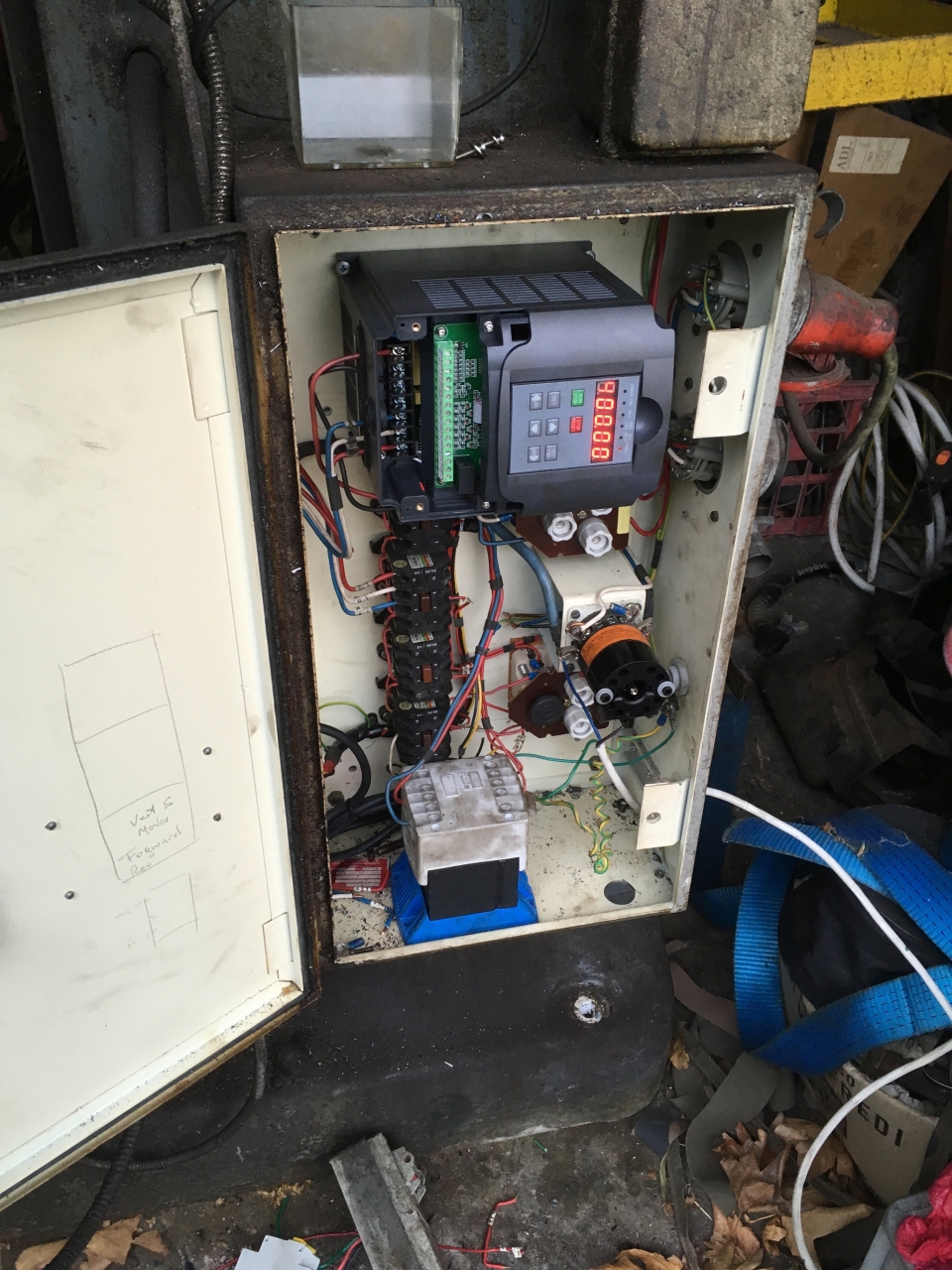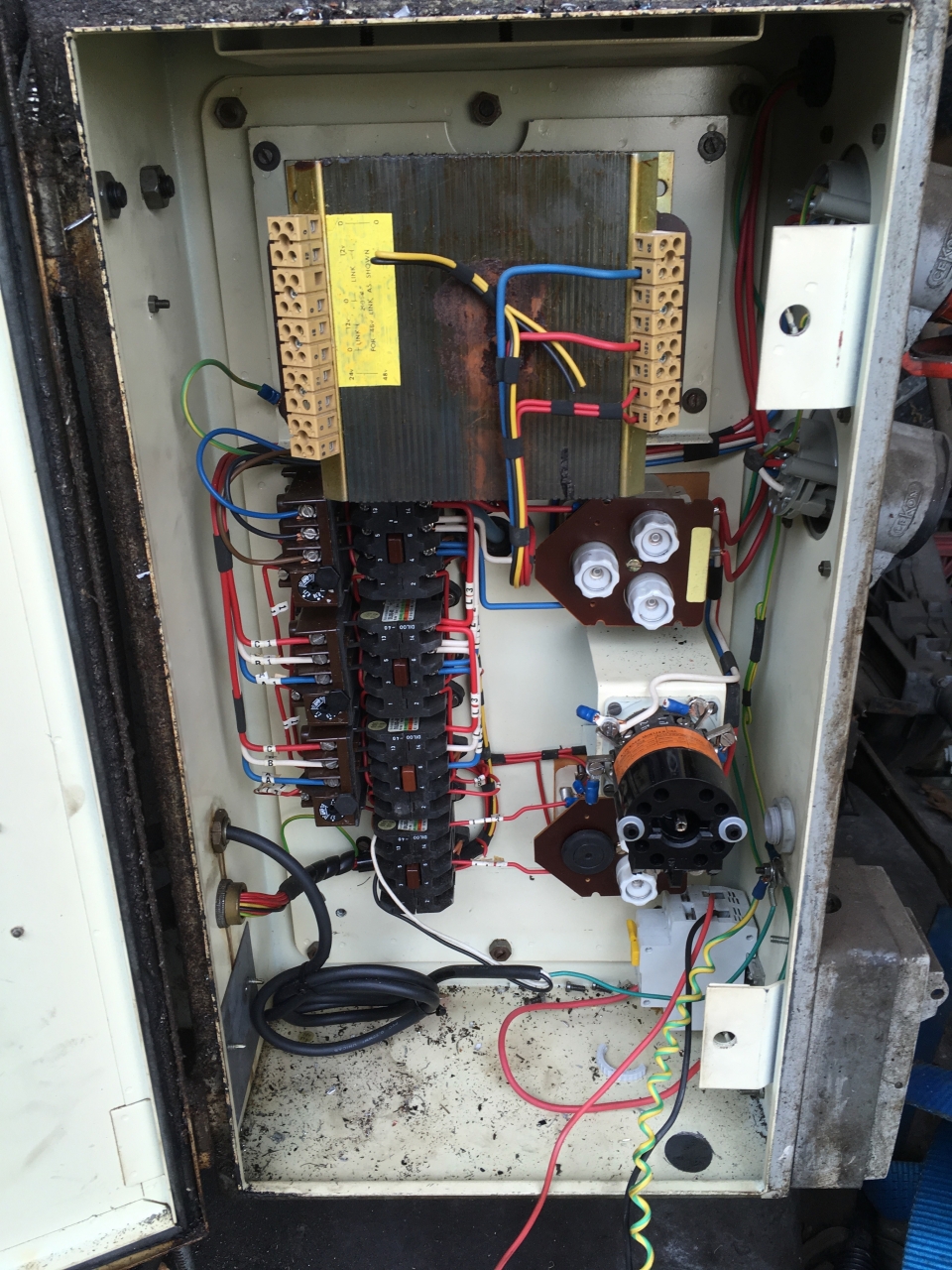-
Spent Saturday pulling the engine out of the bus and stripping it down to get the heads off. The new oil line setup meant that removing the engine was much easier. Unplugging the loom was interesting, mostly as I had pre-fitted the loom to the engine prior to installing it. this made access to the hidden coil packs a little bit of a challenge, but not impossible.
With the heads removed the next part of the puzzle was getting my Bridgeport mill up and running. The mill is 3 phase powered and so I needed to convert it to single phase before I could use it. Fortunately I had already bought the necessary parts (an inverter and 110v transformer) but up until this point hadn't had a valid excuse to install them. The conversion took me most of Sunday afternoon but by the end of it I had a working mill with power feed, power quill, working DRO and a light. (very important that part lol)
So todays task was to set the mill up and re-skim the heads. Setting the mill up involved carefully measuring the head orientation relative to the table. The head needs to be perfectly perpendicular or else any machining that you carry out will not be square. This is the issue I had on my smaller mill when I originally cut the heads. (or at least that's what I thought).
So with the mill set up I clamped the first head to the table and set it up ready to be machined. The great thing about this mill is that it has a power quill feed, which means that you can set the depth stop and the mill will automatically machine down to this depth and then stop. This makes undertaking a machining operation such as this a breeze.
So after machining both heads I offered up one of the barrels to see how it fitted. What I noted was that the barrel did not actually seat in the head properly, instead the mating surfaces were slightly apart, leaving a slight gap. Further inspection showed that there is a wider part of the barrel just before the fins that was preventing it from seating properly. I suspect that this may have even been the original issue that I had, but as the gap was so slight I never noticed it.
Generally when decking the head for high compression the first fin is machined off, this provides the extra clearance needed, I did not think that this was required when decking the head by a few thou but was obviously wrong. To remedy the issue I counterbored a step in the head to provide clearance for the barrel.
The only issue is that now, after all of the additional machining, my heads are only 39cc, which with my current deck height of 40 thou gives me a static compression ratio of about 9.8:1. With no boost this works out to a dynamic ratio of 8.9:1. When I factor for 8psi of boost my dynamic ratio increases to 13.9:1, which is way up there (general rule of thumb is max of 12.5 for pump gas.). So I now have some thinking to do...
Part of the reason for this build was to push things with the stock 1600, it's a bit of an experiment. The engine is basically made from junk pile parts and the goal was to see how far I could go with a blown 1600 utilising stock parts.
My original CR was about 8.7:1, which is pretty standard for a boosted car on pump gas running around 10psi. My original plan was to run higher boost and use twin plugs and singh grooves to help control detonation by reducing timing and improving squish / swirl. So one option is that I could leave the CR high as it currently is and run lower boost, this would give me plenty of room to see if the mods I've made to reduce detonation work as I can easily add more boost. The other option is to invest more time into modding the combustion chambers to lower the CR and have a 'safer' engine. Hard to determine which is the best option. Perhaps a bit of both,
I would really like to blend the area around the second plug into the rest of the chamber as the plug is partially shrouded. I did not notice this before as I did not have the plugs fitted when I assembled the engine. Not sure how much this change will net me, but pretty sure it will not get me back down to 8.7:1. I don't really want to remove material from elsewhere as the chamber shape is good. Removal of more material would effectively mean losing some of the quench pads which I feel would have a detrimental effect as the singh grooves rely on the quench pad to work.
Will sleep on it and see what takes my fancy in the morning.
Post is under moderationStream item published successfully. Item will now be visible on your stream.

